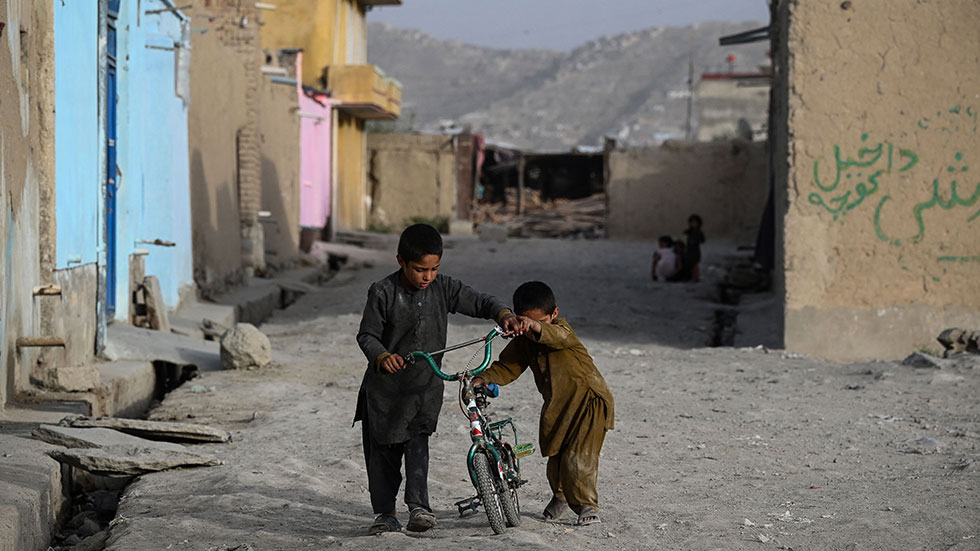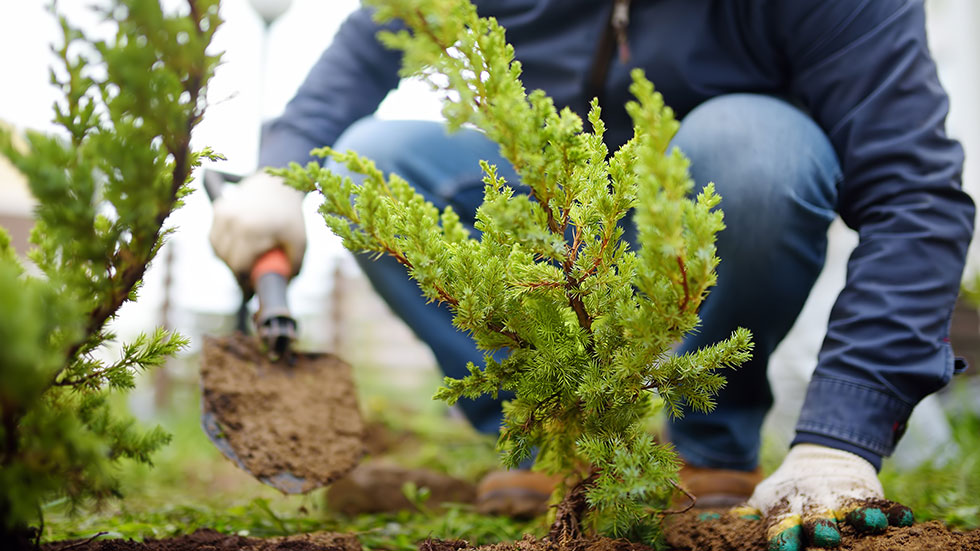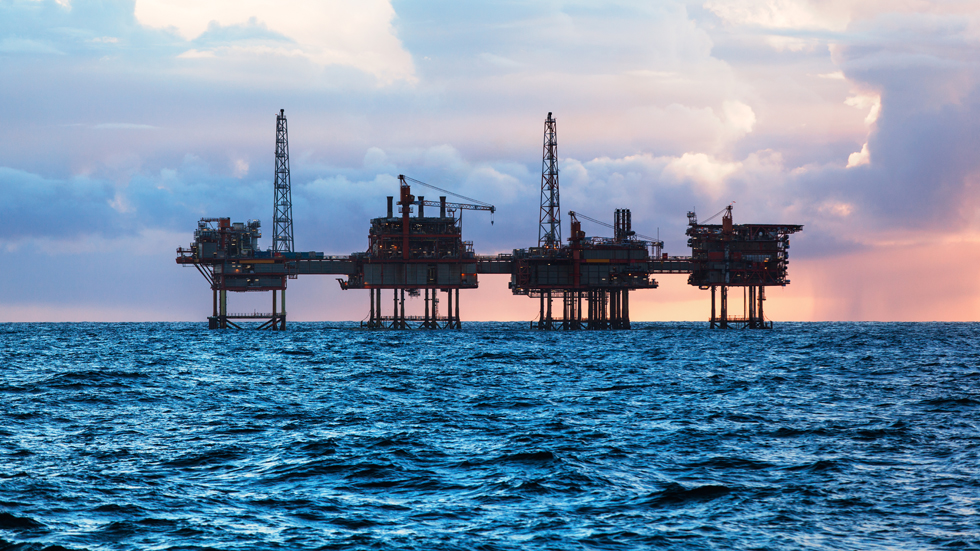The Hill’s Sustainability Report: In Haiti, a struggle to bury earthquake victims
Today is Friday. Welcome to Equilibrium, a newsletter that tracks the growing global battle over the future of sustainability. Subscribe here: digital-staging.thehill.com/newsletter-signup.
Haitians are crowding private funeral parlors and burying relatives in their yards, as much of the infrastructure necessary to inter the island’s 2,200 dead has crumbled in the same earthquake that killed them, The Associated Press reported.
Government morgues are out of the power needed to run refrigeration, private funeral homes are often full to capacity and funeral directors are stressed. “I was already working eight hours a day, and now I have to work 24,” director Jean Eddy Montezima told the AP. “I am burning $50 in gas every day.”
Across town, another funeral home director is trying to avoid the “sacrilege” of burial in mass graves. “If a family can’t pay,” the director Marc Dor Lebrun said, “we’ll help them out.”
Today we’re looking at how climate change is exacerbating Afghanistan’s political turmoil, just as a UNICEF report includes the country as one of its riskiest environments for children. Then we look at a search engine that has planted more than 130 million trees.
For Equilibrium, we are Saul Elbein and Sharon Udasin. Please send tips or comments to Saul at selbein@digital-staging.thehill.com or Sharon at sudasin@digital-staging.thehill.com. Follow us on Twitter: @saul_elbein and @sharonudasin.
Let’s get to it.
Climate complicates risks to children in Afghanistan and around the world

Almost half of the world’s 2.2 billion children are at “extremely high-risk” from climate change impacts — and some of those most at risk are those in war-torn Afghanistan.
About 1 billion children face what a UNICEF report described as “a deadly combination of exposure to multiple climate and environmental shocks” due to insufficient essential services. They live in 33 nations, including Afghanistan, a country that “has dealt with prolonged drought and political instability for years, and once again faces an uncertain future after it came fully under the control of the Taliban,” according to CNN.
UNICEF launched its Children’s Climate Risk Index in collaboration with Fridays for Future, the youth climate movement led by activist Greta Thunberg.
What’s in the index? The following number of children are “highly exposed” to these risk factors:
- 240 million to coastal flooding
- 330 million to riverine flooding
- 400 million to cyclones
- 600 million to vector-borne diseases
- 815 million to lead pollution
- 820 million to heat waves
- 920 million to water scarcity
- 1 billion to exceedingly high levels of air pollution
Although the index found that almost all children experience at least one factor, those in high-risk countries faced multiple and overlapping risks “that threaten to erode development progress and deepen child deprivations.”
Where does Afghanistan land? Afghanistan placed 15th amid 33 “extremely high-risk countries,” out of 163 nations total. All those with even greater risk than Afghanistan were located in Africa, aside from Pakistan.
Most of the 10 countries at the bottom of the list — those with the least risk — were in Europe, while China placed 40th, the U.S. ranked 80th and Russia placed 90th.
Fragile states align with fragile climates: Afghanistan also recently landed ninth out of 179 countries on the Fragile States Index 2021, an annual measure from The Fund for Peace. In a “Heat Map” accompanying the index, Afghanistan fell in one of the highest alert categories.
Like Afghanistan, many fragile countries “align with fragile climates,” according to Andy Revkin, founding director of the Initiative on Communication and Sustainability at Columbia University’s Earth Institute.
Revkin spoke with a group of experts at his Thursday “Sustain What?” webinar, which focused on climate fragility and resilience, particularly in Afghanistan.
‘IT’S GOING TO GET MESSY’
Worse than apocalyptic: Even 20 years ago, when Revkin covered Afghanistan for the Times just after 9/11, the country’s climate outlook was already grim, as it grappled with one of the worst droughts in the past century.
Back then, things were “fairly apocalyptic,” as Matt Barlow, a climate science professor at the University of Massachusetts, told Thursday’s webinar. Barlow recalled “massive crop failures, livestock death, internal migration, villages abandoned.”
And today’s environmental and political climate, Barlow warned, means “a whole new level of challenges.”
Trouble downstream: Afghanistan holds the headwaters of the Amu Darya River — a key regional artery which flows northwest toward its Central Asian neighbors. Historically, that wasn’t a problem: Afghanistan took negligible amounts from the river, according to Mickey Glantz, director of the Consortium for Capacity Building at the University of Colorado Boulder.
But there has been a recent “ramp-up by Afghanistan” of Amu Darya water use, Glantz said, citing Uzbek sources.
Glantz drew comparisons to China’s operations in the Mekong River, predicting that Afghanistan will start building dams upstream, complicating relations with Russian allies Turkmenistan, Uzbekistan and Tajikistan.
“It’s going to get messy,” he said.
The maintenance of other resources, like minerals, also depends on a robust supply of water and power, said former U.S. intelligence officer Rob Schoonover, adding that such resources could boost Afghanistan’s economy — in theory.
Afghanistan holds about $1 trillion in recoverable minerals, potentially including rich supplies of lithium — a key ingredient in batteries and electric cars, CNN reported.
Schoonover questioned, however, whether “the Taliban is capable of undertaking a sustainable mining program that doesn’t cause severe ecological damage.”
What could help? The Department of Defense has called climate change a threat multiplier, according to the Lawfare Institute — meaning it makes other threats worse.
From Schoonover’s perspective, the case in Afghanistan is a microcosm for the larger shift that is needed in U.S. national security doctrine. That doctrine, he said, must incorporate environmental considerations already being studied by federal science agencies, the State Department and the U.S. Agency for International Development — in hopes of “building resilience” as climate change accelerates.
Search engine raises money to plant millions of trees

Over the past decade, the search engine Ecosia has funneled its ad revenues into planting more than 130 million trees across 32 countries.
They’ve done this by avoiding the complicated world of carbon offsets — where companies finance tree planting in order to compensate for carbon emissions — in exchange for a far simpler model: running a search engine and using the proceeds to hire local experts to plant trees.
How does it work? “Just like any other search engine,” Antonia Burchard-Levine, from Ecosia’s tree planting team, told Equilibrium. “You open your browser, download the extension, and search.”
The company generates a surplus of solar power that runs its searches and sells extra power to the grid — using its entire profit for climate action and about 80 percent to plant trees, Burchard-Levine said.
That mostly means contracting with local partners who have experience planting in the diverse countries they work in so that the trees have the best shot.
How is it different from other tree planting programs? Around the world tree-planting programs are touted as both a method of ecological restoration and of storing carbon — like in China, where the government plans to add 14,000 square miles of greenery — a bit larger than Maryland — every year until 2024, according to Reuters.
China has adopted such “afforestation” tactics — planting forests where they have not previously been — as part of its pledge to bring down emissions.
Ecosia avoids this approach: Planting trees in areas where there was no original forest, Burchard-Levine said, “can cause more harm than good.”
Instead, the search engine aims to return “a forest to where there used to be a forest,” with a particular focus on landscapes where forests are both highly biodiverse and particularly degraded, she told Equilibrium.
They also avoid selling carbon: Most tree-planting businesses in the world are selling the trees themselves — if not for logging, then as a source of carbon credits that polluters can buy to cancel out their own emissions, according to Burchard-Levine.
Why they don’t sell offsets: Because it’s complicated, and they don’t have to. “We’re getting revenue from our searches, and that revenue is going to the ground,” Burchard-Levine said. Unlike offset vendors, “we have a way to finance tree planting that is not necessarily in the carbon market.”
That means paying for traditional tree planting to connect balkanized wildlife habitats in Brazil’s Atlantic Forest or to retake ancient forests claimed by the desert in Burkina Faso.
But it also pays for a call-in radio show for Malawi farmers to bring their questions about how to encourage trees on their land, or Brazilian firefighter brigades who put out nighttime fires set by cattle ranchers.
How do they verify their trees are growing? Through remote sensing by satellites aided by machine learning and on-the-ground apps.
Advice for businesses who do want to offset: “It’s important to buy high quality carbon credits,” which verify that the trees actually survive long enough to hold down carbon, Burchard-Levine said. “There are a lot that are not high quality, that are sold at a cheaper price.”
Follow-Up Friday

Our weekly tying-off of loose threads from the week.
Developing nations pump gas on offshore oil drilling
- Four developing nations — Brazil, Ghana, Guyana and Suriname — have announced plans to pump “massive oil and gas discoveries” off their coasts, Reuters reported.
- An ongoing controversy over whether the world needs new oil, as we covered on Thursday, has put such countries in a race against time: Can they get their fossil fuels to market before a clean energy shift renders such an effort futile?
- “This is the last big window of opportunity,” a Brazilian oil regulator told Reuters.
- “We will need that money to invest in these green industries,” an executive at Surinam state energy firm Staatsolie added.
Colorado River shortage could strain ties among basin states
- In the aftermath of the Bureau of Reclamation’s first-ever shortage declaration in the Colorado River Basin — which we covered earlier this week — some officials are concerned that states will “act in their own self-interest” and spark legal turmoil, Bloomberg Law reported.
- “There’s always been a little ruffling of feathers” between the Lower Basin states (Arizona, California, and Nevada) and the Upper Basin states (Colorado, New Mexico, Utah, and Wyoming), Andy Mueller, general manager of the Colorado River District in Glenwood Springs, Colo., told Bloomberg Law. “And that could get more severe as we move forward in the drought.”
- But Western water litigators told Bloomberg that a history of Colorado River negotiations and treaties is unlikely to be replaced by conflict in court, as most states “would rather be the master of their own fate,” one lawyer said.
Amid catastrophic blazes, Europe looks for solutions
- After “a colossal heatwave” hit Europe last week — setting record temperatures in Italy of 48.8 degrees Celsius and triggering wildfires — the continent is looking to change the ways people live and how land is used, the Financial Times reported.
- “What’s clear is that climate change will lead us to see [more of] such events,” French President Emmanuel Macron said, after travelling to the fire-stricken Saint-Tropez, which we discussed earlier this week.
- French police authorities have implemented policies to reduce fire risk, such as creating “fire break” pastures and roads in woodland, Pierre Carrega, an emeritus professor at the University of Nice, told the Times.
- But precautionary measures implemented after catastrophes often slacken with time, he said, adding that “forest fires are forgotten until they explode.”
Please visit The Hill’s sustainability section online for the web version of this newsletter and more stories. Have a great weekend — we’ll see you on Monday.
{mosads}
Copyright 2024 Nexstar Media Inc. All rights reserved. This material may not be published, broadcast, rewritten, or redistributed..













